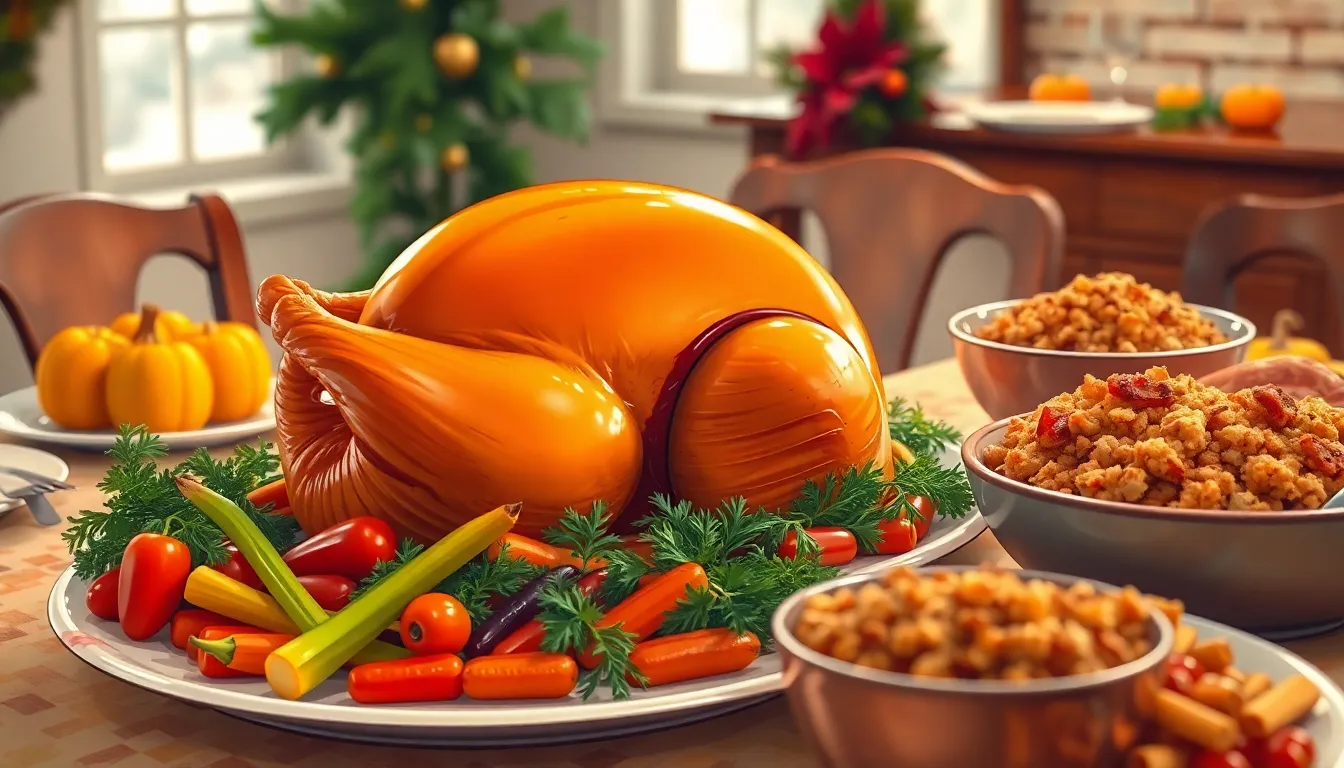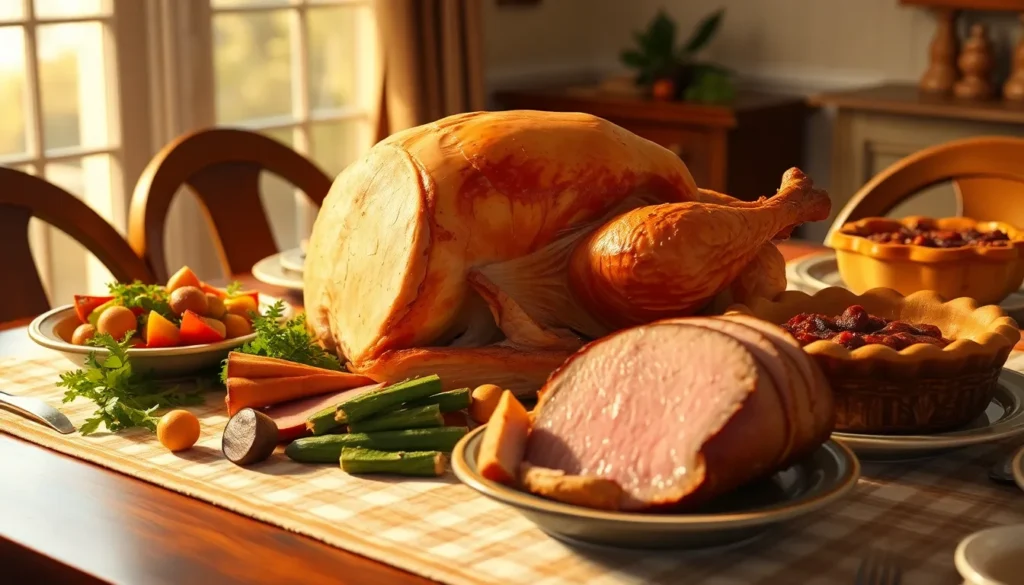Thanksgiving is a time for family gatherings and delicious feasts, but not every dish lives up to the holiday’s culinary expectations. While turkey and stuffing often steal the spotlight, some Thanksgiving foods can leave guests cringing rather than craving seconds. From overly dry turkey to bizarre side dishes, these culinary missteps can turn a festive meal into a memorable disaster.
Exploring the world of bad Thanksgiving food reveals more than just unfortunate cooking; it uncovers family traditions, regional quirks, and the occasional kitchen mishap. Whether it’s the infamous green bean casserole or a questionable cranberry sauce, these dishes often spark debates and laughter around the table. Join the conversation as we dive into the most notorious offenders that can turn a Thanksgiving feast into a food fiasco.
Bad Thanksgiving Food
Thanksgiving features a variety of dishes, but certain culinary choices often miss the mark. Some foods may irritate taste buds and evoke memories of family debates. This section details common Thanksgiving food blunders that lead to disappointment.
Common Offenders
- Dry Turkey: Overcooked turkey results in a lack of moisture, making it unappetizing. Countless Thanksgiving dinners suffer from this classic mistake.
- Rubbery Ham: Improper cooking leads to chewy ham that challenges even the most enthusiastic eater.
- Canned Cranberry Sauce: Some families serve canned cranberry sauce, which offers a cloying taste and an unappealing texture. Fresh alternatives provide a more vibrant flavor.
- Unseasoned Vegetables: Plain vegetables lack seasoning, leaving diners disappointed. Offering flavorful roasted or sautéed options enhances the table’s appeal.
- Green Bean Casserole: With overcooked beans and soggy toppings, this classic can transform into a mushy mess.
- Stuffing Mishaps: Overly dry or overly wet stuffing challenges the palate. Balancing moisture and seasoning is crucial for success.
- Experimental Dishes: Unfamiliar ingredients can lead to culinary disasters. Guests often appreciate reliable, classic dishes over unusual novelties.
Cultural Impact
Traditional Thanksgiving foods often evoke nostalgia. However, the presence of unappetizing offerings can stimulate laughter and create memorable tales, immortalizing these culinary missteps in family lore. Embracing the holiday spirit involves understanding that not all dishes will meet expectations, but the shared experience frequently results in cherished memories.
This overview highlights the importance of culinary choices during Thanksgiving gatherings, ensuring that food becomes a source of joy rather than disappointment.
Common Offenders

Certain dishes frequently miss the mark during Thanksgiving, leading to disappointment and awkwardness. Here are some of the most notable offenders.
Overcooked Turkey
Overcooked turkey stands as a primary culprit in disappointing Thanksgiving meals. When cooked too long, turkey dries out, leaving a tough texture and diminished flavor. Aiming for a cooking temperature of 165°F ensures moist, tender meat. Cooked correctly, turkey retains its natural juices and appealing taste, creating a more satisfying dining experience.
Dry Stuffing
Dry stuffing often leads to discontent on Thanksgiving tables. Preparation methods that lack moisture or proper seasoning contribute to this issue. Using broth, adding sautéed vegetables, or incorporating herbs enhances flavor and texture. Ideal stuffing complements turkey while providing a satisfying contrast, boosting the overall enjoyment of the meal.
Unseasoned Vegetables
Unseasoned vegetables frequently disappoint guests, lacking the flavor necessary to elevate a Thanksgiving meal. Boiled or steamed without spices, these vegetables can taste bland and uninspired. Enhancing vegetables with salt, pepper, and herbs or roasting them helps to bring out natural flavors. Seasoned vegetables add vibrancy and balance to the meal, encouraging guests to enjoy their greens.
Thanksgiving Disasters
Thanksgiving can bring culinary catastrophes that leave guests bewildered. Some dishes become notorious for their ability to turn a festive meal into a horror story.
Burnt Pie
Burnt pie stands out as a classic Thanksgiving disaster. Overcooked crusts often lead to an inedible, charred exterior that masks the tender filling within. Pumpkin and pecan pies, while typically beloved, can transform into bitter memories when neglected in the oven. Guests may squint at the dessert, wondering how a holiday staple turned into a culinary tragedy. This unfortunate misstep reflects the critical nature of monitoring baking times and temperatures, as even a few minutes can alter the outcome significantly.
Suspicious Side Dishes
Suspicious side dishes can create uncertainty at the Thanksgiving table. Unusual ingredients or strange combinations can overwhelm familiar flavors, leaving diners hesitant. Examples include jellied salads with unexpected additions, such as olives or nuts, resulting in raised eyebrows. Green bean casseroles lacking crunch due to soggy beans also fall into this category. When side dishes stray too far from traditional preparations, they often spark discussions about their place in Thanksgiving tradition, shifting focus away from the main course. A careful balance of creativity and classic flavors typically leads to a more harmonious dining experience.
Cultural Perspectives on Bad Thanksgiving Food
Thanksgiving food often varies significantly across families and regions, leading to both excitement and disappointment. Cultural influences shape how certain dishes are prepared and presented, sometimes resulting in unexpected flavors and textures.
Variations in Traditional Dishes
Culinary adaptations can transform classic favorites into something less desirable. Regional preferences often dictate these variations. For example, New England’s use of seafood stuffing contrasts sharply with the Southern inclination towards cornbread. Similarly, some families may opt for exotic ingredients, such as curries or fruit in stuffing, that overwhelm traditional flavors. These deviations can lead to confusion, as familiar dishes morph into unexpected interpretations, generating mixed reactions among guests.
Family Recipes Gone Wrong
Family traditions often carry cherished recipes, but not all attempts yield favorable results. Each cook’s interpretation of these time-honored dishes can lead to culinary disasters. For instance, a beloved grandmother’s pie recipe may suffer from an undercooked crust or an overly sweet filling, altering the anticipated flavor profile. When attempts to recreate a cherished meal go awry, expectations clash with reality, leaving family members reminiscing about past successes and laughing at today’s mishaps. Such moments contribute to the tapestry of family lore, reflecting how personal cooking stories intertwine with Thanksgiving celebrations.
How to Avoid Bad Thanksgiving Food
Avoiding bad Thanksgiving food involves careful planning and culinary skills. Implementing effective strategies ensures a memorable meal.
Tips for Successful Meal Planning
- Create a Menu: Outline dishes and their ingredients before shopping.
- Balance Flavors: Combine traditional and innovative dishes to please diverse palates.
- Test Recipes: Prepare a trial run of new recipes to gauge flavors and textures.
- Guest Input: Consider guests’ preferences and dietary restrictions when selecting dishes.
- Timeline: Develop a cooking schedule to manage time effectively on Thanksgiving Day.
Essential Cooking Techniques
- Proper Thawing: Thaw turkey in the refrigerator for 24 hours per 5 pounds to maintain moisture.
- Brining: Use a saltwater solution to enhance turkey flavor and juiciness.
- Roasting: Roast turkey at 325°F until it reaches an internal temperature of 165°F for optimal texture.
- Stir-Frying: Incorporate vegetables without overcooking for crispness and flavor retention.
- Baking: Monitor pie crusts closely to avoid burning while cooking other dishes.
Conclusion
Thanksgiving meals can be a mixed bag of triumphs and culinary missteps. While the focus often rests on beloved traditions and family recipes, it’s clear that bad Thanksgiving food can leave a lasting impression. The laughter and stories shared around the table often stem from these less-than-stellar dishes.
By learning from past blunders and applying thoughtful planning and preparation, it’s possible to elevate the Thanksgiving experience. Embracing a balance of creativity and tradition can lead to a feast that not only satisfies but also fosters cherished memories. As Thanksgiving approaches, keep in mind that even the most notorious food fails can become a delightful part of family lore.

